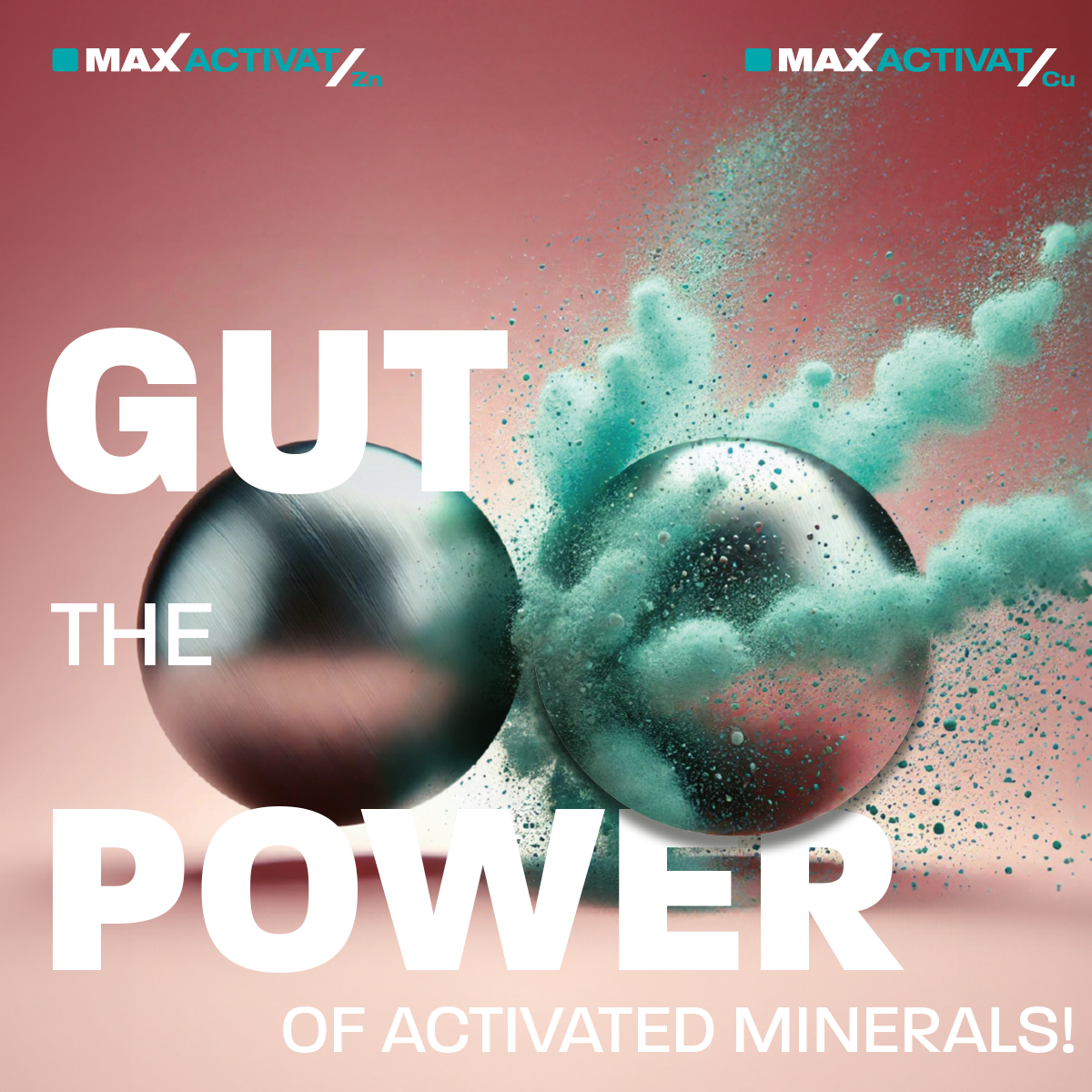GET READY FOR A LOW Zn NURSERY PROGRAM: MAXACTIVAT/Zn AS A PART OF A SUSTAINABLE FEEDING STRATEGY
MAXACTIVAT/Zn and MAXACTIVAT/Cu are novel, activated zinc oxide (ZnO) and copper oxide (CuO) sources with a unique production process. MAXACTIVAT/Zn and MAXACTIVAT/Cu can be included in lower dosages in the diet than feed-grade ZnO or CuO and support gut integrity. The activated products result in lower heavy metal excretions supporting sustainable feeding strategies.
High dietary ZnO diets (2,000 – 3,000 mg Zn/kg complete feed) have reduced post-weaning diarrhea and improved growth performance in weaning pigs. However, the exact mode of action remains unclear. Current research suggests a combination of several factors (such as gastrointestinal microbiota composition and activity, liver, pancreas, and gut barrier function). A high dietary Zn content leads to greater Zn concentrations in manure. The environmental impact of Zn and Cu used in animal nutrition mainly affects groundwater, and the Cu accumulation in soil appears to be a long-term environmentaly concern. In addition, soil and water contamination with Zn and Cu possibly lead to accumulations triggering the co-selection of antibiotic resistance.
DIETRY Zn CONCENTRATION AFFECTS COLON MICROBIOME AND ABUNDANCE OF ANTIBIOTIC RESISTANCE GENES
A key study by Pieper et al. (2020) assessed the effect of low (40 ppm Zn), normal (110 ppm Zn), and very high dietary ZnO (2,500 ppm Zn) concentrations on the composition and activity of the intestinal microbiota in weaned pigs. As a result, the abundance in colon digesta of most genera of Firmicutes phylum, Bacteroidetes, and Actinobacteria were greater for the very high ZnO treatment group. At species level, a greater diversity was determined for normal ZnO than for very high ZnO in colon digesta. Total short-chain fatty acids (SCFA) concentration was lower for very high ZnO than the other treatments. In addition, the relative abundance of antibiotic resistance genes in colon digesta was greater for very high ZnO compared to the other treatments.
A Sustainable Future with MAXACTIVAT
In conclusion, MAXACTIVAT/Zn and MAXACTIVAT/Cu are game-changing products to create more sustainable, environmentally friendly feeding strategies for pigs. By reducing the dietary inclusion rates of zinc and copper, these innovative products support gut health while minimizing heavy metal excretions. The study demonstrated that maintaining low or normal zinc concentrations promotes a more diverse gut microbiome, increases SCFA production (which is beneficial for gut health), and potentially reduces the risk of antibiotic resistance.

These findings underscore the need for alternatives like MAXACTIVAT that support gut integrity without relying on excessive zinc levels. The present study shows that low and normal Zn concentrations result in greater diversity. Furthermore, microbial activity (SCFA) in the porcine colon a potential beneficial effect on gut integrity. Furthermore, pharmacological ZnO concentrations might contribute to selecting certain antibiotic-resistance genes.
All technical statements are based on scientific literature and trial results. References and trial details are available upon request.
Source: Pieper, R., Dadi, T. H., Pieper, L., Vahjen, W., Franke, A., Reinert, K., and J. Zentek. 2020. Concentration and chemical form of dietary zinc shape the porcine colon microbiome, its functional capacity, and antibiotic resistance gene repertoire. The ISME Journal, Volume 14, Issue 11, 2783–2793, https://doi.org/10.1038/s41396-020-0730-3

 Deutschland
Deutschland USA
USA Brasil
Brasil Español
Español